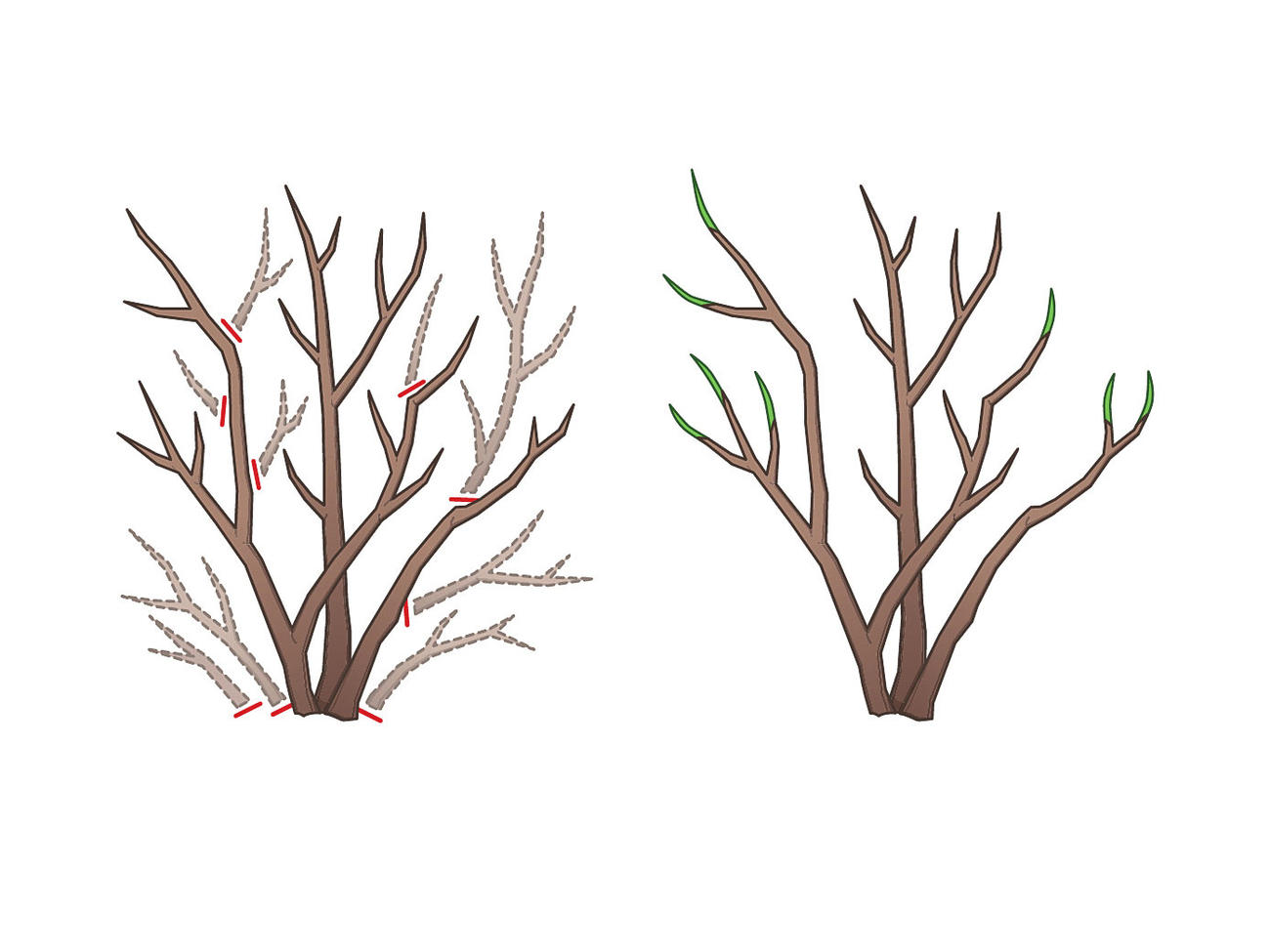
Basic Pruning Cuts
A review of pinching, heading, thinning, and shearing

There are four basic pruning cuts, each aimed at producing a different effect. For cuts that involve cutting above a growth bud, angle it at about 45 degrees, with the lowest point of the cut opposite the bud and even with it, the highest point about 1/4 inch above the bud.
Pinching
One of the easiest “cuts” to make can be achieved without cutting: you simply pinch off a terminal bud with your thumb and forefinger. Pinching stops the stem from elongating and encourages bushy growth. It is typically done on annual and perennial flowers and on some vegetables; it’s also effective for directing growth on small-leafed shrubs to give the plant an even shape.
At right are three types of pruning cuts: pinching removes the terminal growth; heading removes part of the shoot; and thinning eliminates the entire shoot.
